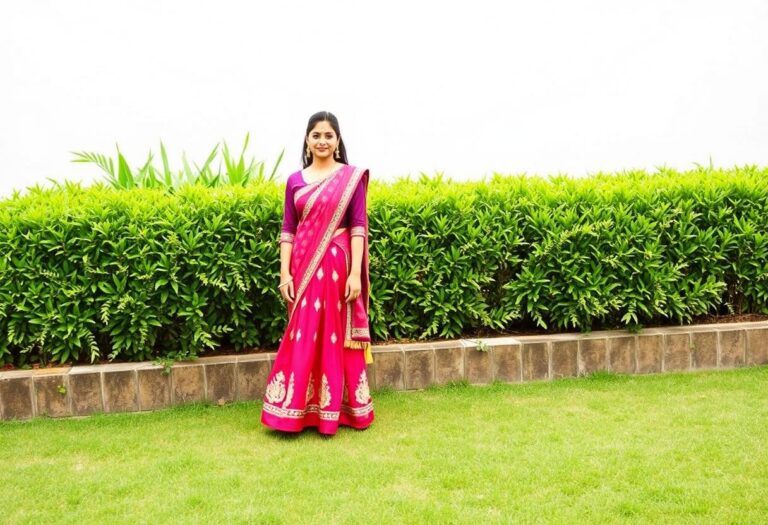India is a land of diverse cultures, languages, and traditions, and this diversity is vividly reflected in its traditional clothing. Each region of the country has its own unique style of dress that represents its heritage and cultural values. Here’s a look at the top 10 traditional dresses of India that showcase the country’s rich sartorial legacy.
1. Saree
The saree is perhaps the most iconic traditional dress in India, worn by women across the country in various styles. This elegant garment, typically ranging from 5 to 9 yards in length, is draped around the body with one end draped over the shoulder. The saree is not only a symbol of grace and beauty but also a representation of India’s diverse cultural tapestry, with each region having its own distinctive draping style and fabric.
2. Salwar Kameez
The salwar kameez is a popular traditional outfit, especially in northern India. It consists of a long tunic (kameez) paired with loose-fitting trousers (salwar) and often accompanied by a dupatta (scarf). The salwar kameez is known for its comfort and versatility, making it a staple in both everyday wear and festive occasions.
3. Lehenga Choli
The lehenga choli is a traditional dress worn by women in many parts of India, particularly during weddings and festivals. The ensemble consists of a long, flared skirt (lehenga), a fitted blouse (choli), and a dupatta. Richly embroidered and adorned with intricate designs, the lehenga choli is a symbol of festive opulence and cultural elegance.
4. Dhoti
The dhoti is a traditional garment worn by men, especially in rural and semi-urban areas of India. It is a long piece of cloth, usually white or cream in color, wrapped around the waist and legs, and knotted at the waist. The dhoti is particularly associated with South India and Bengal, and is often paired with a kurta for formal occasions.
5. Kurta-Pajama
The kurta-pajama is a classic traditional outfit for men in India, consisting of a long tunic (kurta) and loose-fitting trousers (pajama). This attire is popular for its comfort and simplicity, and is worn across the country for both casual and formal events. The kurta-pajama can be plain or richly embroidered, depending on the occasion.
6. Sherwani
The sherwani is a formal, traditional outfit worn by men, especially during weddings and important ceremonies. It is a long coat-like garment worn over a kurta and paired with churidar or pajama. Often made from luxurious fabrics and adorned with intricate embroidery, the sherwani is a symbol of regal elegance and is particularly popular in North India.
7. Mekhela Chador
The mekhela chador is a traditional dress worn by women in Assam. This two-piece garment consists of a skirt-like lower part (mekhela) and a chador, which is draped around the upper body. The mekhela chador is typically made from silk or cotton and features intricate woven patterns, reflecting the rich cultural heritage of Assam.
8. Pheran
The pheran is a traditional garment worn in Kashmir, suitable for both men and women. It is a long, loose-fitting robe designed to keep the body warm during the cold winter months. The pheran is often adorned with intricate embroidery, especially around the neck and cuffs, and is an integral part of Kashmiri culture.
9. Ghagra Choli
The ghagra choli is similar to the lehenga choli and is traditionally worn by women in Rajasthan and Gujarat. The outfit consists of a long skirt (ghagra), a blouse (choli), and a dupatta. The ghagra choli is known for its vibrant colors and mirror work, making it a festive favorite during events like Navratri and weddings.
10. Lungi
The lungi is a traditional garment worn by men in South India, particularly in Tamil Nadu, Kerala, and parts of Karnataka. It is a simple, rectangular piece of cloth tied around the waist, often in a checkered pattern. The lungi is known for its comfort and is commonly worn in hot and humid climates.
Conclusion
India’s traditional dresses are a testament to the country’s rich cultural diversity and history. Each garment tells a story of its region, reflecting the local customs, climate, and lifestyle. Whether it’s the graceful saree or the regal sherwani, these traditional outfits continue to be an integral part of India’s cultural identity.
